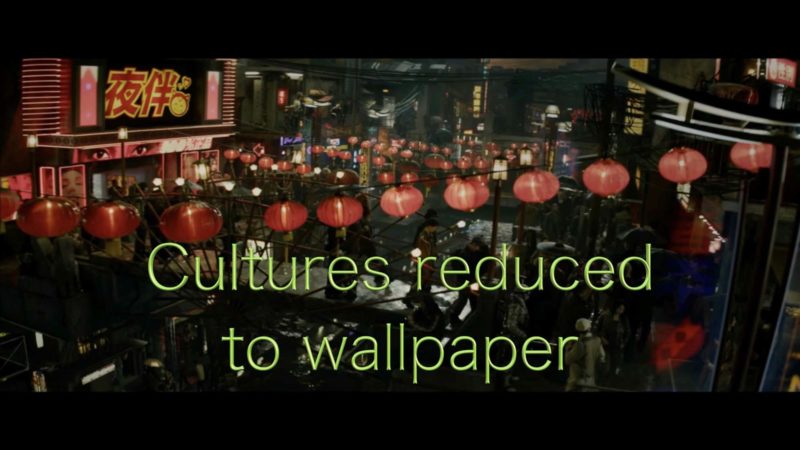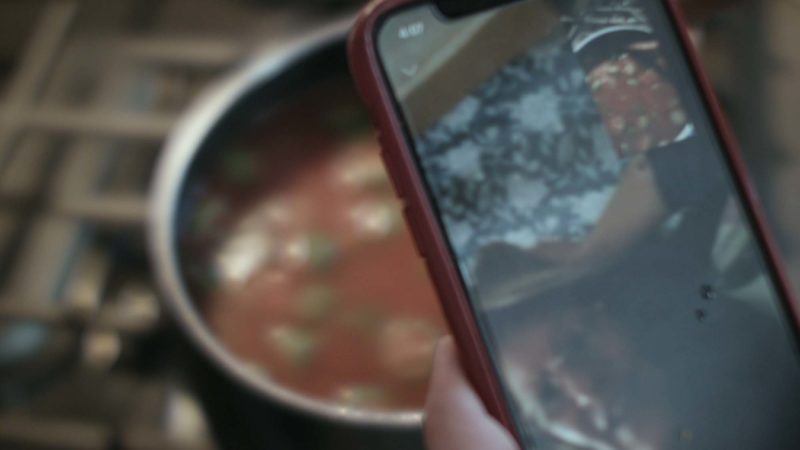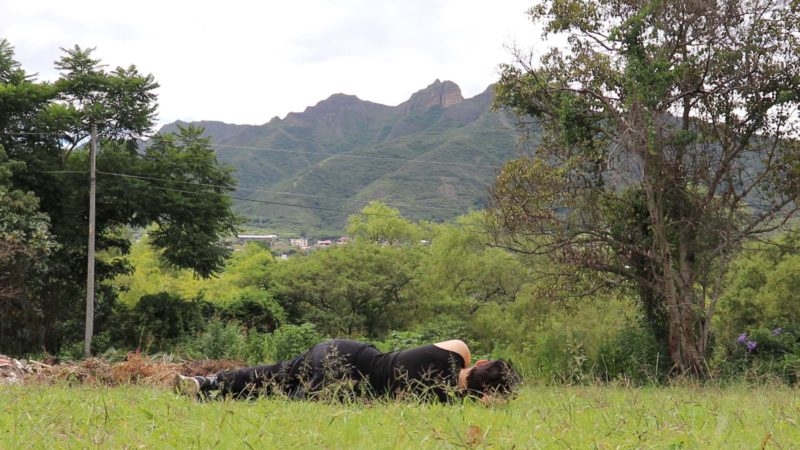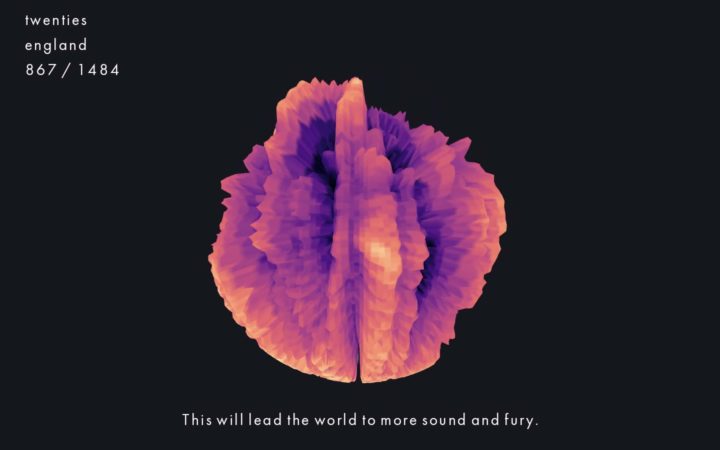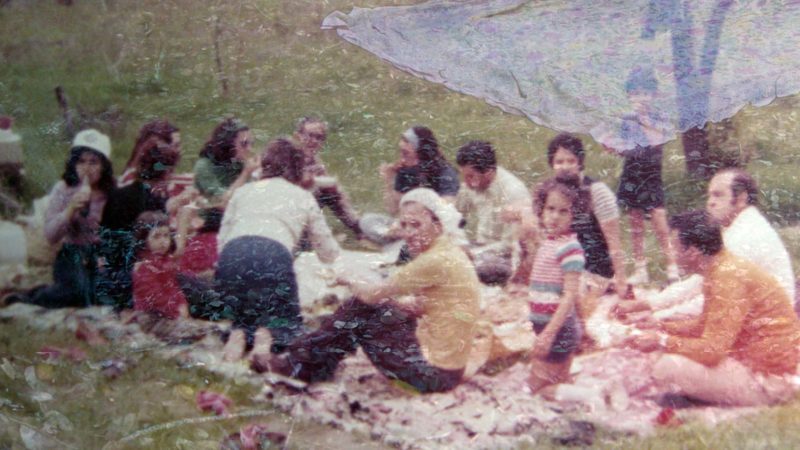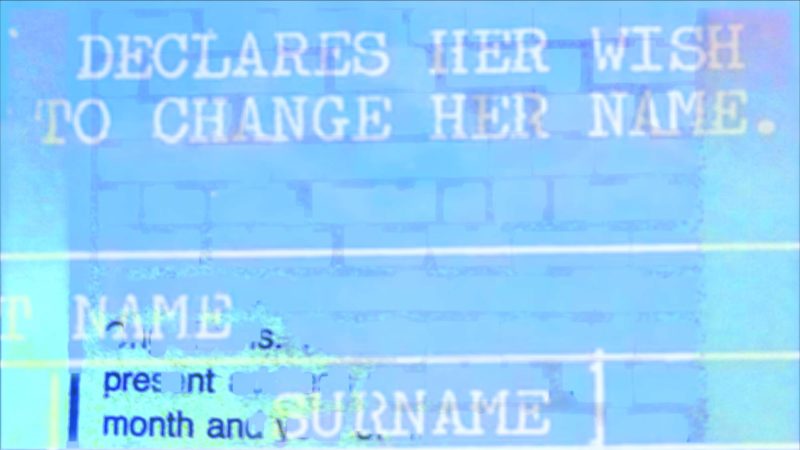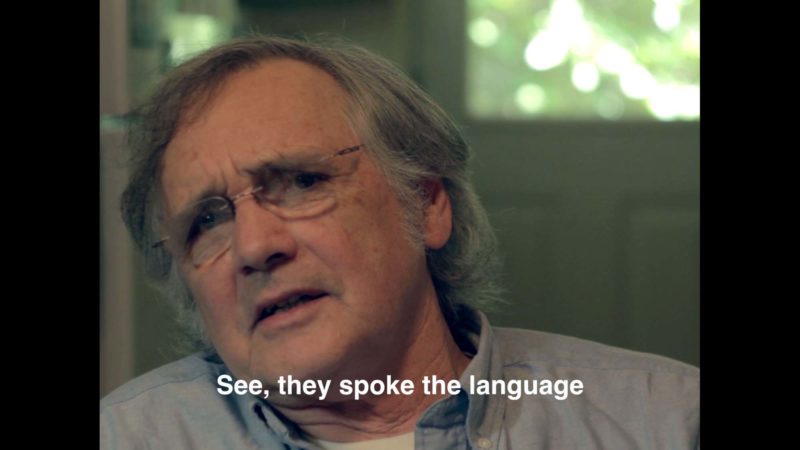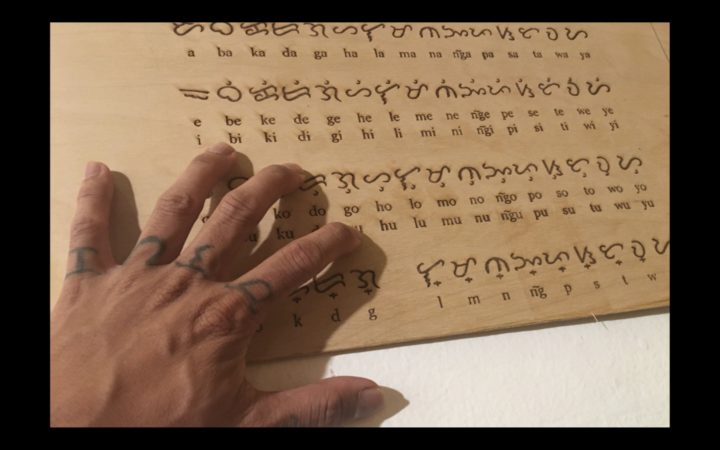
- This event has passed.
Echolocations: Films in translation and transcription
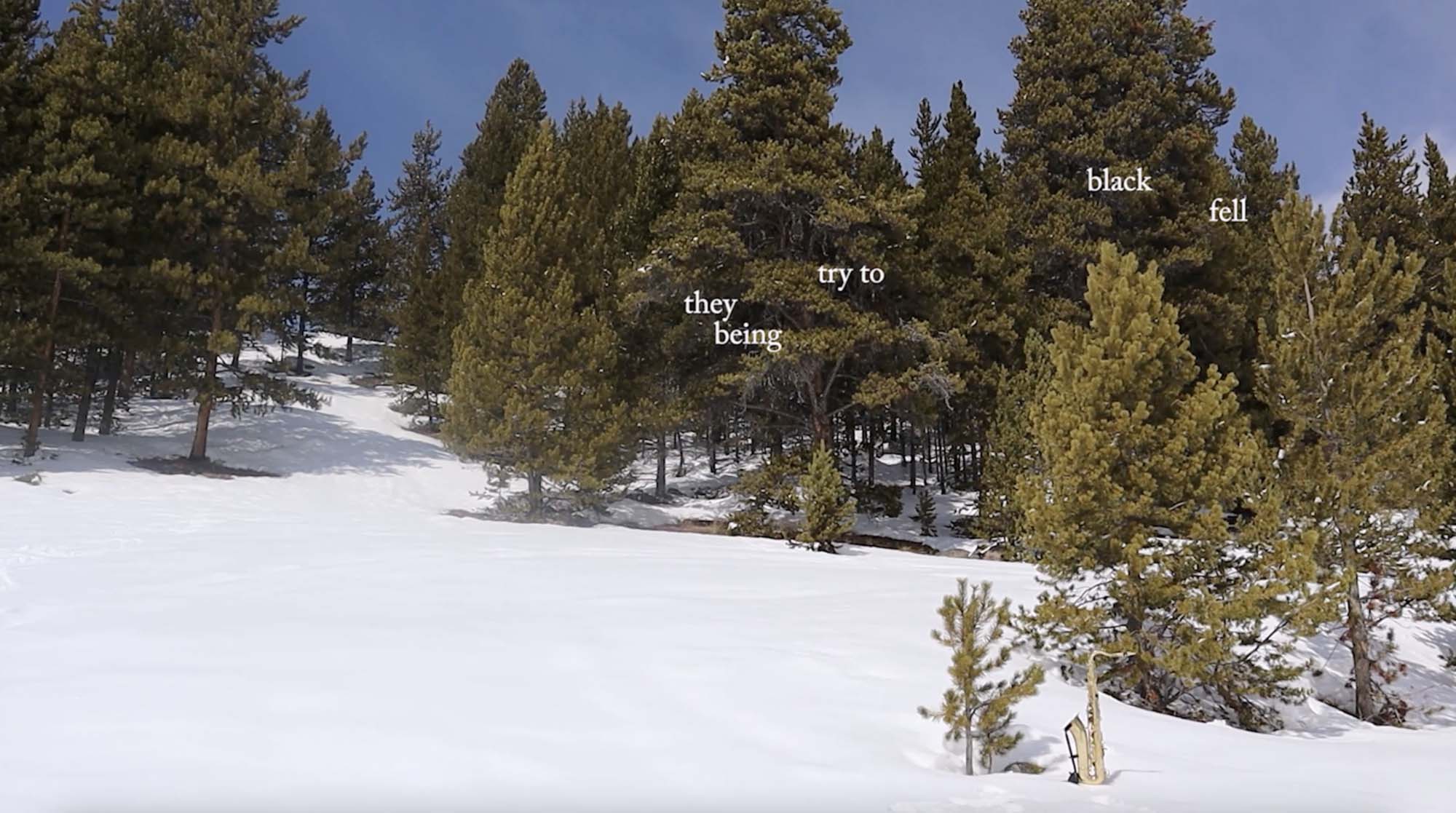
Tuesday, October 17, 7 pm ET
@ Journey’s End Refugee Services (2495 Main St #530, Buffalo, NY 14214) and online
Free or suggested donation
Tickets available below
Gathering nine short films, this screening looks at how voice and language are made legible across borders and power. Bringing together essay films and personal non-fiction films, historical analyses and experimental films, the filmmakers’ approaches to subtitles, captions, translations, and interpretation grapple with the histories, present, and futures of imperialism, colonialism, racism, and ableism. Alternately playful, angry, contemplative, utopian, and generous, the films help us imagine new relationships, between films and audiences, and between each other, across languages and voices.
Featuring films by Alex Dolores Salerno, Astria Suparak, champoy, JJJJJerome Ellis, Johann Diedrick, Nadia Shihab, Saif Alsaegh, Sky Hopinka, and Buffalo filmmaker Olivia Ong Evans who will be in person. Presented as part of [Speaking in Foreign Language].
This event will take place in person at Journey’s End Refugee Services (JERS) and online.
For in-person attendees: JERS is located on the fifth floor of Tri-Main Center; head left after you exit the elevator. Please note that you cannot enter Tri-Main Center after 7:30 pm.
For online attendees: Upon check-out, you will receive an email titled “Your Squeaky Wheel Film & Media Art Center order has been received!”. A private link will be included in that email; the event will be available at the link at the start date and time. You will have access to the event for 24 hours; Squeaky Wheel members receive 72 hour access. Not a member yet? Sign up here.
Accessibility: For in-person audiences: ASL interpretation can be requested with 3 days notice for the Q&A with Olivia Ong Evans. For both in-person and online attendees: Several of the films have open captions. Some of the films, such as champoy’s english is yr mother tongue and Astria Suparak’s On the Neon Horizon have no spoken dialogue, while Nadia Shihab’s Echolocation elects not to translate moments where Iraqi Turkmen is spoken. The subtitles in Sky Hopinka’s wawa actively think through the act of translation from Chinuk Wawa to English. Alex Dolores Salerno’s El Dios Acostado provides captions and audio descriptions in English and Spanish. Please see individual film notes below.
The total program length is ~85 minutes. Program notes courtesy of the artists.
champoy, english is yr mother tongue, 4 min, 2020
When the American colonial education system in the Philippines imposed English as the sole language for teaching, suppressing indigenous languages and turning classrooms into sites of linguistic dominance. How did we learn to embrace translation as a playful act? How did we reclaim our agency as a people and assert our own identities in the face of oppressive language policies? How How De Karabaw De Batuten.
Saif Alsaegh, 1991, open captions, 12 min, 2018
1991 revolves around a conversation between the filmmaker, an Iraqi asylum-seeker living in the US, and his mother Bushra, an Iraqi immigrant who was living in Turkey while she awaited approval to immigrate to the US. Both are in uncertain positions regarding their immigration statuses and have not been able to see each other for years. 1991 navigates the distance between them. Through a facetime phone conversation, the film expresses the ways that a relationship becomes virtual and symbolic across forced distance. 1991 is set in a cabin where the filmmaker lives a semi-imaginary, peaceful life, building fires, cooking, and dancing. The central phone conversation details Bushra’s memory of the filmmaker’s birth in the middle of the 1991 Gulf War and the danger and suffering she went through. Through poetic juxtaposition of the virtual landscape of the phone, the calm landscape of the cabin, and the chaotic landscape of memory, the film paints a cruel image of the horror of war, displacement, and separation.
Nadia Shihab, Echolocation, open captions, 9 min, 2021
The rain in Oakland, my grandmother’s home in Baghdad, my aunts’ voices in What’s App, my daughter learning to count to 10, my brother playing the darbuka, the cicadas in Texas, the walls of my studio, the search for new forms.
Note: Dialogue in Iraqi Turkman is intentionally not translated / subtitled.
JJJJJerome Ellis, Impediment is Information, open captions, 15 min, 2021
This music-video-poem work centers on an 18th century newspaper advertisement for the recapture of a fugitive slave with “an impediment in his speech.” A handheld camera captures blurry conifers; a saxophone prays to a mountain. By rearranging the words of the advertisement to create lines of poetry, I am seeking new meanings and sites of resistance in the archive. The work was commissioned by ISSUE Project Room in New York City. It premiered on Juneteenth, a day that recognizes the emancipation of those who had been enslaved in the United States. In creating this work for the occasion of Juneteenth, I wanted to celebrate Black freedom practices. I think these practices divinely exceed official proclamations, emancipatory and otherwise.
Johann Diedrick, Dark Matters, 2021
Dark Matters exposes the absence of Black speech in the datasets used to train voice interface systems in consumer artificial intelligence products such as Alexa and Siri. Utilizing 3D modeling, sound, and storytelling, the project challenges our communities to grapple with racism and inequity through speech and the spoken word, and how AI systems underserve Black communities.
Astria Suparak, On the Neon Horizon, 8:27 min, 2023
On the Neon Horizon is a short video essay that takes one of the world-building tics of white science fiction — gratuitous signage in Asian languages — to consider its utopian potential and dystopian applications.
Fantastical mise en scène, breathtaking B-roll footage, and special effects deliriums from four decades of mainstream sci-fi by white American, Australian, Canadian, European, and New Zealander filmmakers craft an insidiously Asian futurescape — sometimes achieved by simply shooting in a present-day Asian country or a North American Chinatown. In aggregate, these productions inextricably tether non-white cultures to criminality and contagion, portraying Asian cultures and people as existential threats to white Western ideas of freedom.
Sky Hopinka, wawa, open captions, 4 min, 2014
Featuring speakers of chinuk wawa, an Indigenous language from the Pacific Northwest, this film begins slowly, patterning various forms of documentary and ethnography. Quickly, the patterns tangle and become confused and commingled, while translating and transmuting ideas of cultural identity, language, and history. Courtesy of Video Data Bank.
Alex Dolores Salerno, El Dios Acostado, 11 min, 2020
El Dios Acostado entangles conversations of rest, care, and colonialism, and asks us to consider what the land has to teach us about rest. The video incorporates access as part of its aesthetic. Adding to the slow pace of the video, all of the visual descriptions and narration are repeated twice, once in Spanish and once in English, with a doubling of large captions centered in the frame. The video begins with a nap alongside the mountain “Mandango”, meaning “dios acostado” or “sleeping god”, and describes the gentrification of the small town of Vilcabamba, which was dubbed “the valley of longevity” by European and North American researchers in the 70s who the artist’s mother encountered as a child. The video then cuts to her hometown, San Pedro de la Bendita, a nearby town spared from worldwide recognition. Introduced through a view of family tombstones at the town’s cemetery, the artist’s mother describes her relationship to her hometown, highlighting the love and care that can flourish with a relationship to land and community.
Olivia Ong Evans, Identity Karma, 11 min, 2021
Identity Karma is an abstract video project that emerged from a period of research and reflection on Suharto’s New Order Era in Indonesia. Creating the video was a way to reflect on the intergenerational consequences of cultural repression, and the personal effects of anti-Chinese discrimination. It is an homage to my ancestors, to my mother, and to the land. The video was guided by the question: What happens to our cultural and racial identities when we are alone? It jumps between over-saturated, multi-layered moments and landscapes removed from social context, and scattered words in English, Bahasa Indonesia, Simplified Chinese, and Hokkien. The distance and frustration of miscommunication co-exists with the closeness and familiarity that can be expressed through language. Footage from Bogor, Indonesia and Haudenosaunee land in Buffalo and Western New York interact throughout the video.
Alex Dolores Salerno (b. 1994, Washington D.C.) is an interdisciplinary artist based in Brooklyn, NY. Informed by queer-crip experience, community, and culture, they work to critique standards of productivity, notions of normative embodiment, 24/7 society, and the commodification of rest. Salerno received their MFA from Parsons School of Design and their BS from Skidmore College. They have exhibited at the Museum für Moderne Kunst (Frankfurt), Espacio de Arte Contemporáneo de Castellón (Castellón), ARGOS centre for audiovisual arts (Brussels), Art Windsor-Essex (Canada), The Shelley & Donald Rubin Foundation’s 8th Floor Gallery, the Ford Foundation Gallery (NYC), among others. Salerno is a recipient of the 2022 Wynn Newhouse Awards, and their work has been featured in the New York Times and Art in America. They recently participated in the Visual Artist AIRspace Residency at Abrons Arts Center (2022-2023), and they are currently in residence at BRIClab: Contemporary Art Residency Program at BRIC (2023-2024).
Astria Suparak is an artist and curator based in Oakland, California. Her cross-disciplinary projects address complex and urgent issues (like institutionalized racism, feminisms and gender, and colonialism) made accessible through a popular culture lens, such as science fiction movies, rock music, and sports.
champoy (pronouns: they/them/he/him/she/her/siya ) is a Filipinx interdisciplinary artist, filmmaker and educator weaving historical and personal narratives through film, installation and performance.”
JJJJJerome Ellis is a proud stutterer. Through music, literature, performance, video, and photography he researches relationships among blackness, disabled speech, divinity, nature, sound, and time. His body of work includes: contemplative soundscapes using saxophone, flute, dulcimer, electronics, and vocals; scores for plays and podcasts; albums combining spoken word with ambient and jazz textures; theatrical explorations involving live music and storytelling; and music-video-poems that seek to transfigure archival documents. Born in 1989 to Jamaican and Grenadian immigrants, he lives in Norfolk, Virginia, USA with his wife, ecologist-poet Luísa Black Ellis. They like walking in the woods and drinking tea together.
Johann Diedrick (he/him) is an artist, engineer, and educator who makes listening rooms for encountering new sonic possibilities off the grid. His performances, installations, and sculptures surface resonant histories of past interactions inscribed in material and embedded in space, peeling back vibratory layers to reveal hidden memories and untold stories. He shares his tools and techniques through listening tours, workshops, and open-source hardware/software.
Nadia Shihab is an artist whose work explores the personal, the relational and the diasporic. Her first feature documentary Jaddoland was awarded five festival jury awards including the Independent Spirit “Truer than Fiction”” Award in 2020. Her recent short films include Sister Mother Lover Child (2023), Echolocation (2021) and Amal’s Garden (2012). Her work has screened internationally, including at Cinema du Réel, Walker Art Center, Berkeley Art Museum, Black Star Film Festival, Images Festival, DOXA, Camden International Film Festival, Kassel Dokfest and Cairo International Film Festival. Her creative practice is preceded by a decade of work as a community practitioner and housing advocate in the San Francisco Bay Area. She was raised in west Texas by immigrant parents from Iraq and Yemen and is an Assistant Professor in Film in the School for the Contemporary Arts at Simon Fraser University.
Olivia Ong Evans is an artist living in Buffalo, New York on Haudenosaunee homelands. Her video art often explores themes of migration and identity construction through experimental glitch. To shape identity from change, to find meaning in misunderstanding, to imagine home. Her video Identity Karma was created as part of the Squeaky Wheel Workspace Residency in the Summer of 2021.
Saif Alsaegh is a United States-based filmmaker from Baghdad. Much of Saif’s work deals with the contrast between the landscape of his youth in Baghdad growing up as part of the indigenous Chaldean minority in the nineties and early 2000s, and the U.S. landscape where he currently lives. His films have screened in festivals including Cinéma du Réel, Kurzfilm Hamburg, Kassel Dokfest, Aesthetica Short Film Festival, and in galleries and museums including the Wisconsin Triennial at the Madison Museum of Contemporary Art and Rochester Contemporary Art Center.
Sky Hopinka (Ho-Chunk Nation/Pechanga Band of Luiseño Indians) was born and raised in Ferndale, Washington and spent a number of years in Palm Springs and Riverside, California, Portland, Oregon, and Milwaukee, Wisconsin. In Portland he studied and taught chinuk wawa, a language indigenous to the Lower Columbia River Basin. His video, photo, and text work centers around personal positions of Indigenous homeland and landscape, designs of language as containers of culture expressed through personal, documentary, and non fiction forms of media. His work has played at various festivals including Sundance, Toronto International Film Festival, Ann Arbor, Courtisane Festival, Punto de Vista, and the New York Film Festival. His work was a part of the 2017 Whitney Biennial, the 2018 FRONT Triennial and Prospect.5 in 2021. He was a guest curator at the 2019 Whitney Biennial and participated in Cosmopolis #2 at the Centre Pompidou. He has had a solo exhibition at the Center for Curatorial Studies, Bard College, in 2020 and in 2022 at LUMA in Arles, France. He was a fellow at the Radcliffe Institute for Advanced Study at Harvard University in 2018- 2019, a Sundance Art of Nonfiction Fellow for 2019, an Art Matters Fellow in 2019, a recipient of a 2020 Alpert Award for Film/Video, a 2020 Guggenheim Fellow, and was a 2021 Forge Project Fellow. He received the 2022 Infinity Award in Art from the International Center of Photography, and is a 2022 MacArther Fellow.

